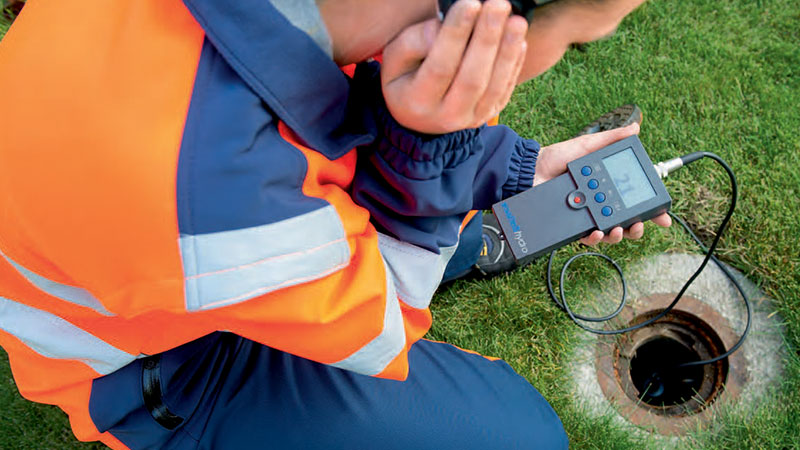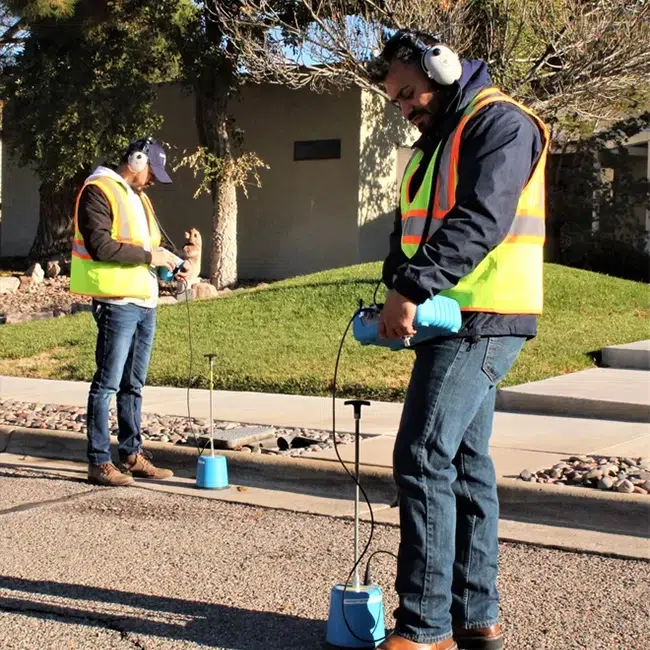Water Leak Detection: How to Identify and Repair Leaks Before They Cause Damage
Water Leak Detection: How to Identify and Repair Leaks Before They Cause Damage
Blog Article
Innovative Solutions for Early Discovery of Water Leaks in Buildings and Infrastructure
From advanced leak detection innovations to the implementation of IoT sensing units for real-time monitoring, the landscape of leakage prevention is evolving quickly. Automated water circulation analysis systems are reshaping how leaks are identified and resolved, leading the method for an aggressive strategy to water leak detection.
Advanced Leakage Discovery Technologies
Advanced leakage detection technologies, geared up with cutting-edge sensing units and formulas, play an essential duty in swiftly determining and pinpointing water leaks in various settings. These innovations utilize a mix of acoustic, thermal, and electromagnetic noticing methods to discover leakages precisely. Acoustic sensing units discover the sound of escaping water, permitting specific localization of the leakage resource. Thermal imaging identifies temperature changes brought on by water leakage, supplying one more reliable approach for leakage recognition. Electromagnetic sensors can recognize adjustments in magnetic fields brought on by water, offering yet an additional layer of leakage discovery capability.

IoT Sensors for Real-Time Surveillance
In the world of contemporary water leak discovery, the integration of IoT sensing units for real-time surveillance represents an essential innovation in boosting aggressive leakage discovery abilities. These sensors supply continual tracking of water supply, offering real-time data on water circulation rates, pressure variants, and temperature adjustments. By leveraging IoT innovation, these sensing units can spot also the tiniest anomalies in water use patterns, allowing early identification of potential leakages prior to they intensify into major issues.
IoT sensors transfer information to a centralized platform, where advanced algorithms examine the info and produce informs or notices when abnormalities are found. This real-time surveillance capability allows homeowner or facility supervisors to immediately resolve leaks, decreasing water damages, lowering repair prices, and saving water resources.
Additionally, IoT sensing units can be integrated with structure monitoring systems, allowing for automated feedbacks to found leaks, such as shutting down water shutoffs or turning on pumps to alleviate the impact of leakages. In general, the execution of IoT sensors for real-time tracking considerably boosts the efficiency and effectiveness of water leak detection in structures and facilities.
Maker Learning Algorithms for Leakage Prediction

One trick advantage of utilizing equipment learning for leakage prediction is its ability to continually learn and enhance its precision in time. As more data is gathered and fed right into the algorithm, it can refine its predictions and adjust to changing problems, inevitably raising the integrity of leak detection systems.
Moreover, machine understanding formulas can assist in determining subtle signs of leakages that may go undetected by conventional surveillance methods. water leak detection. By assessing intricate data collections in real-time, these algorithms can offer very early cautions and signals, permitting punctual intervention and precautionary maintenance to minimize potential More about the author water damages and connected prices
Using Thermal Imaging for Leakage Discovery
Thermal imaging modern technology uses a promising method for detecting water leakages in different systems and facilities. By using infrared radiation and temperature level variances, thermal imaging electronic cameras can determine hidden leaks that are not easily noticeable to the naked eye. When water leaves from pipelines or structures, it often changes the temperature level of the surrounding area, producing temperature differentials that thermal cams can catch. These temperature level irregularities are after that translated right into noticeable photos, highlighting the specific location of the leakage.
One of the vital advantages of thermal imaging for leak detection is its non-intrusive nature. Overall, the usage of thermal imaging innovation enhances the effectiveness and accuracy of water leakage detection, making it a valuable device for preserving the honesty of buildings and infrastructures.
Automated Water Flow Analysis Equipments
How can automated water circulation evaluation systems reinvent the discovery and administration of leakages in different systems and frameworks? Automated water flow analysis systems offer a proactive technique to leakage detection by continuously keeping track of water flow rates and patterns. By developing baseline data, these systems can quickly identify inconsistencies that might show a leak, making it possible for punctual intervention to stop considerable damage.
These systems use innovative algorithms to analyze real-time information and give immediate alerts when anomalies are discovered, enabling quick action to be taken. Furthermore, computerized water flow analysis systems can be integrated with building management systems or IoT platforms, boosting general effectiveness and enabling remote tracking capabilities.
Furthermore, the data gathered by these systems can be used for predictive maintenance purposes, aiding to recognize possible weak points in the facilities before leaks occur. Generally, the implementation of computerized water circulation analysis systems can dramatically improve leak detection and management methods, eventually bring about cost financial savings, decreased water waste, and increased sustainability in buildings Visit This Link and facilities.

Verdict
Finally, the assimilation of innovative leakage detection technologies, IoT sensing units, equipment learning algorithms, thermal imaging, and automated water flow analysis systems uses ingenious services for early discovery of water leakages in structures and facilities. These technologies enable real-time surveillance, prediction of leaks, and reliable discovery methods to avoid water damage and waste. Executing these solutions can help in maintaining the integrity and sustainability of water systems in different setups.
Report this page